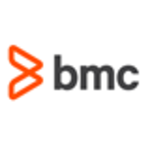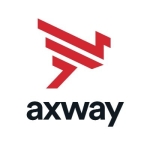What is our primary use case?
We primarily used GoAnywhere MFT to transfer files. Our organization had third-party source vendors who needed to submit files that had to get to us or our third-party end vendors securely. Files were fairly large in size, and we needed to track who was delivering the files and when, whether it was the right type of file, and whether it was delivered to the vendor partner at the right time.
We also wanted to run it through a project management tool. The automated processes, which I think were called project workflows, allowed us to do this a lot more seamlessly than we were able to do before.
How has it helped my organization?
I am very happy with the usage that we had when I was managing it. I am a fan of the product. It helped save me a lot of time and a lot of headaches.
It took us a little bit of time to get it up and running. It was not a whole lot of time compared to other tools. We had it up and running in no time, and we were able to implement an advanced solution. We had SecureMail working for years and had people logging in. It took us about a week to figure things out and get support from GoAnywhere on how to use that. It took about a month to two months to solidify the MVP use case, get that tested with the end users, and then get it up and running. We were also able to tweak it. After about six months of that tool being in use, we got feedback from our end vendors who were using the tool on both sides of the house. They were able to change the way the teams worked because they did not need to train everyone on how to use the tool. With this drag-and-drop interface that we had set up for them using GoAnywhere's MFT, each process was given a folder, so they just dragged files into the folder, and then from there, the backend handled all of it and moved it over to where it was supposed to go securely. They were able to change the way their teams worked internally. That was a benefit for us. Having efficiency for our partners is not something that necessarily saved us money, but it certainly created a much better working relationship with our partners. They were much happier with that.
The other benefit was time savings because of the simplicity of the tool. Now we have people logging into a complex interface, going in, checking a bunch of dots or a bunch of fields, and filling in some values as they upload each file. With the automation that we had with the process workflows, that was all handled in the backend. We have now got a little bit longer lead time and that is why we are looking at going back and getting this GoAnywhere MFT again because it saved us so much headache.
GoAnywhere MFT saved us time in connecting securely with the third parties we needed to collaborate with. Some of the files that we send are time-sensitive and restricted. We cannot share them with anyone who does not have an NDA with us. It was very important that these files were sent securely and quickly from our source vendors to us so that we could review them and send them over to our end vendors to be delivered to our stores. Having GoAnywhere MFT allowed us to change the way that we did our work.
I was looking into the Box, Salesforce, and SharePoint connectors, but we found that, although the price point was not bad, it was just a lot more than what we needed. We could do most of the capabilities that we wanted with the default API through Box or SharePoint. There was a lot of capability, but we thought that if we were going to use these, we better be doing a whole lot more with it than just the basic simple use case that we had. We were not going to use all the capabilities, so we decided to not use that. We did wind up needing some of the reporting capabilities that GoAnywhere has out of the box. Its advanced reporting made our IT department feel a lot more comfortable about the usage of a tool that had a front-facing website.
What is most valuable?
When we first started using it, SecureMail, or the ability to securely send mail to end users, as a single file or as a package of files, was very helpful for sending large packets of files. We could not send that through traditional email.
It also allowed us to know that the file would expire after a certain amount of time. We could limit the number of downloads. That stopped us from having to worry about whether it had been routed to everyone in the organization. It helped to ensure that it was sent to who it was supposed to be sent to and is no longer available. That was why we had selected GoAnywhere a long time ago, and then the ability to tie it in via APIs and do low-code implementations allowed us to supercharge that.
What needs improvement?
While I was happy with the training and support, more of it could be beneficial. We had some basic training and support. I talked with Fortra recently, and they said that they revamped and changed their training support. I have not used it since December. I got support in February and May of last year, and it was not bad. I was just not sure which questions to ask. Trying to learn this stuff on the fly as you are handed a project is always stressful.
I like that you can tweak the interface so much, but it would be nice to be able to tweak it some more. The ability to further tweak the interface would be advantageous, as our end users had some questions about modifications that we could not address. Other than that, GoAnywhere seemed to fulfill its role as a simple solution for secure file transfer.
For how long have I used the solution?
My organization started using it in about 2012, but I started using it in 2017. Unfortunately, we stopped using it in December 2023. We had been looking at different products that we could remove from our product line. We have a lot of different tools that we use.
GoAnywhere was selected as one of those that we would not use. However, I am currently looking at using GoAnywhere again because removing it has caused a lot of internal problems. We are currently looking at using GoAnywhere or similar tools.
How are customer service and support?
I was very happy with their tech support. Whenever I called or emailed, they responded quickly. For emergencies, they made themselves available to assist promptly.
When we had issues, they moved forward quickly within a couple of days. When we had an emergency, they would make themselves available to handle that. When our service went down because we were transferring over, they were on board for a full five days. They were there and available. I was very impressed by their ability to provide tech support for something that was a very critical system for us.
They were one of our top vendor partners. I would rate them a nine out of ten. I was very impressed, and I expected more of my other vendors because of the quality of support that I got from Fortra.
How would you rate customer service and support?
Which solution did I use previously and why did I switch?
They are not similar, but we tried using SharePoint and Adobe products to perform similar operations of sending files securely. However, these alternatives were complex and not user-friendly. They could do the basic operations of sending files and securely allowing us to share files with our vendors, but it just got complicated. There were too many widgets and too much going on, so we had to train our end users on what to do and how to do it right every single time.
Our users found it easier to use a dedicated tool like GoAnywhere, which had simpler and restricted access controls. With GoAnywhere, the users would log in, and they had files, and those were the only folders they had access to. The access was set by the administrator. It was very clear what they should be using that tool for. When it came to SharePoint, the users had restricted files for a specific purpose, but they also had a whole lot of other files for other reasons, so they would often get lost. It was nice to have a dedicated tool different from other tools that the users were using.
How was the initial setup?
We deployed it three times. Prior to me, it was deployed on a Linux box. We redeployed it to another Linux box, and I was part of that, and then we redeployed it to an Azure machine. I wish that we had more resources and more technical support on our end.
The GoAnywhere team was fantastic in helping us. I am not a technical guy, but I was able to figure it out. The documentation was pretty clear, and for anything that I did not get, I could get on the phone with them. I was pretty happy with how you take the package and install the package and it just runs on your server. It was pretty straightforward. The hard part was working with our IT to make sure that we were doing everything securely on our end. You could have a lockbox, but if you have the key sitting outside, what good is that? Getting it set up so that it was a fully secure system from the moment users accessed it to the moment the users got the NAND file was critical. All the problems that we had or the challenges that we had were related to setting up the cloud machine and working with Azure to get it working, not so much with GoAnywhere's platform.
What about the implementation team?
We were setting up a brand new virtual machine on the Azure environment, so we needed people who could handle the infrastructure as a service capability. That is a whole team at our company. We also had to make sure that the entire thing was set up securely. We have a whole security department that handles that and makes sure that we are setting ourselves up with the right WAF, that it is HTTPS, and that it has a security certificate.
I managed to handle the installation of the software myself. I also set it up and got it configured. I did that myself with support from other people on my team to make sure that I was dotting the i's and crossing the t's. Getting someone else to look at what you are doing is always good quality control. For the most part, it was just me and one other person.
What's my experience with pricing, setup cost, and licensing?
If anyone feels that the price for this product is too high, I would like to know what else they are using. When it comes to secure systems that we have used, the price point can get a whole lot higher. You might end up saving in the short term with other solutions, but are you getting a secure product? Do you feel confident in that? Will you be able to get any support afterward? From my experience, based on the price point and the service that we got, it was a good value for our money. Other people may have different requirements, but it met and exceeded the security requirements for our use case. I would recommend considering the product, what you are spending, and whether you are getting support for that.
What other advice do I have?
We considered using their agents, but we found that a front-facing website was a lot easier for our users to use and for us to implement. We did not have extremely capable IT people to go and install the agents and make sure that we were installing the right version and keeping that up to date on our end users. Having our users guided over to a website that we could then maintain was a lot easier for us to manage. We are not talking about thousands of users. We are talking about about 60 users in total who we were connecting to the tool.
We looked into SecureForms for our end users. It was an additional data entry. For the most part, for our particular use case, these final ART files already had all the metadata that we needed inside of another tool. It was just about getting these files that were identified by a unique identifier from the artist over to our end users. Everything that we needed to know was contained within the user who was logging in and could be referenced by the unique identifier, so we did not want to busy the process with SecureForms. There might be other use cases where SecureForms could be helpful, and we have dabbled with it, but to get our particular use case out the door, we did not need SecureForms.
I would rate Fortra's GoAnywhere MFT a ten out of ten. I was very impressed by the tool, its capability, and the way their support responded. I would absolutely recommend it. I am an advocate for this product. I am biased because it saved me time and frustration.
I would definitely use the product again. I am advocating for it right now. We have spent considerably more than what we have spent in our entire infrastructure trying to find other solutions, but we have not found any. I would definitely go back to it.
Disclosure: PeerSpot contacted the reviewer to collect the review and to validate authenticity. The reviewer was referred by the vendor, but the review is not subject to editing or approval by the vendor.

















